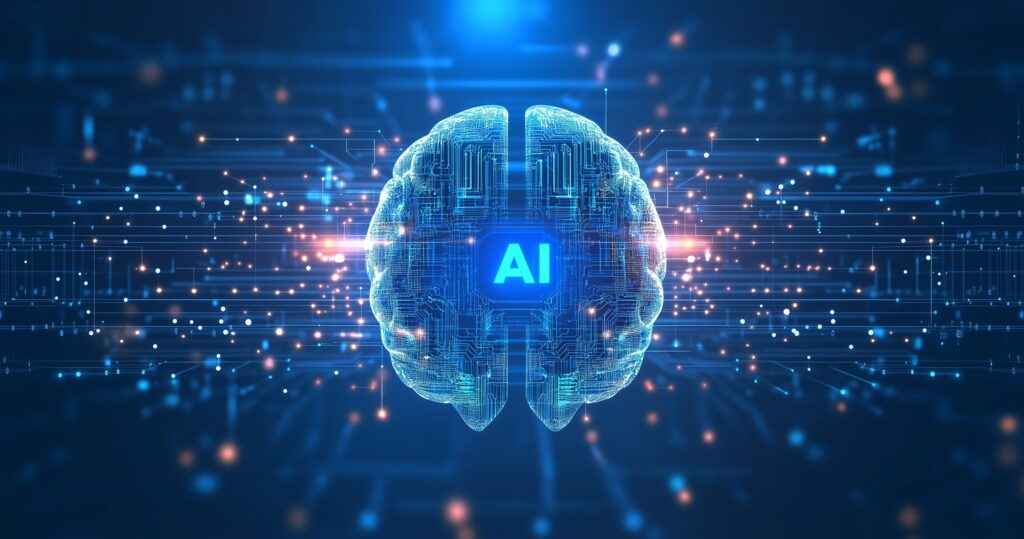Ludrick Cooper, an eighth-grade teacher in South Carolina, once resisted artificial intelligence in class. He later changed his mind.
“This is the new encyclopedia,” Cooper said, recalling his childhood love of reading reference books.
He now joins many teachers who weave AI into lesson plans. This shows how rapidly AI tools gain ground in schools, even as benefits and risks remain uncertain.
A study by the Walton Family Foundation and Gallup found six in ten teachers used AI tools during the 2024-2025 school year.
On Tuesday, First Lady Melania Trump unveiled the Presidential AI Challenge. The program encourages students from kindergarten through twelfth grade to use AI to address local challenges.
OpenAI recently launched a “study mode” for ChatGPT and announced a partnership with Instructure, whose platform supports millions of students. Tech giants OpenAI, Microsoft and Anthropic also teamed with national and New York teachers’ unions to invest $23 million in AI training for 400,000 educators.
AI offers engaging lessons and faster access to knowledge. But experts warn about dangers like easier cheating, growing inequality or mental health concerns.
Sarah Howorth, associate professor of special education at the University of Maine, compared AI to fire. Some see its power; others fear the damage.
AI in the classroom
Instructure, the company behind the learning platform Canvas, collaborates with OpenAI on a new tool called the “LLM-Enabled Assignment.” This allows teachers to design interactive, AI-driven lessons while monitoring student progress.
LLM, short for “large language model,” powers chatbots like ChatGPT. Teachers can prompt the system to adopt a “persona” in class. A history teacher, for example, could ask it to speak as a president or historical figure.
Melissa Loble, Instructure’s chief academic officer, said the partnership shows that learners want new ways to engage with knowledge.
Kayla Jefferson, a high school social studies teacher in New York City, uses AI to keep students engaged and build global literacy.
One of her assignments involves summarizing and reflecting on news articles with the AI-powered Padlet bulletin board. Students read, respond and interact with each other’s posts.
Many AI tools also improve accessibility, Howorth noted. Features like talk-to-text and text-to-speech help students with dyslexia or vision problems.
But Matthew Rascoff, vice provost for digital education at Stanford, stressed the need for AI that supports social learning. He said collaboration skills matter for both schools and communities.
“Great classrooms create a sense of mutual responsibility for everybody’s learning,” Rascoff explained.
AI brings certain risks
The integration of AI in education raises serious challenges.
The New York City Department of Education initially banned ChatGPT on school devices over fears of cheating. It later reversed the ban after officials admitted the technology caught schools off guard.
Instructure described its LLM-Assignment as a guided tool that keeps students accountable, not just a source of answers.
But cheating is not the only concern. Researchers still know little about AI’s effects on mental health.
One mother accused startup Character.AI of influencing her 14-year-old son’s suicide. She and other families have filed lawsuits.
An Instructure spokesperson stressed that Canvas will keep AI use in controlled environments, with safeguards ensuring classroom relevance.
Still, AI tools remain imperfect. Talk-to-text features, for example, often struggle with stutters or heavy accents, Howorth explained.
Robin Lake, director of Arizona State University’s Center on Reinventing Public Education, warned of another divide. Poorer districts may lack resources to adopt advanced AI tools, leaving wealthier schools ahead.
A nationwide survey by the center revealed sharp disparities in teacher training. High-poverty districts reported lower numbers than wealthier ones.
“We must ensure disadvantaged schools access AI’s benefits,” Lake said. “Right now, better-off kids get more tools, more opportunities and stronger teaching.”
Some urban and rural districts reported they feel overwhelmed with existing needs, leaving little room to plan for future AI adoption.
Not all teachers convinced
Despite its rise, some educators reject AI in the classroom.
Lauren Monaco, a New York City teacher with two decades of experience, called AI a crutch. She said teaching requires analysis and human judgment that computers cannot provide.
“Teaching is not just transactional input and output,” she argued. “Our profession has been under attack. I keep asking: Who really benefits from AI?”
Lake from Arizona State University added another dimension. She said schools must consider the role of AI in the future workplace.
“What will students need to succeed in an AI-driven economy?” she asked. “Educators must prepare for that reality.”


